
Birmingham Tolkien Trail: The Original Lord of the Rings Tour
United Kingdom | The complete guide to the Birmingham Tolkien Trail; the original Lord of the Rings tour. Discover what inspired J.R.R Tolkien’s fantasy epic!
Arms aloft with a cheesy grin, many a tourist straddle the north/south divide at one of Ecuador’s most popular attractions. As a nation named by Spanish Colonialists for its location on the equator, it’s of no surprise that the country takes pride in its position at the “middle of the earth”. The title, which has a history stretching back nearly 300 years, is actually claimed by two locations within short walking distance of each other but both are equally sort after by visitors from across the globe.
Transport… Our trip was with CarpeDM who advertised the excursion during the Free Walking Tour. The price was $10.00 each for return transport from our hostel at The Secret Garden (entry not included). As there were four of us, they organised a private taxi who waited for us whilst we viewed the attractions.
Cost… Entry into Museo Solar Inti Ñan was $4.00. A ticket for the other monument is $6.00.
One of Quito’s premier attractions, Mitad del Mundo is based just 20 kilometres outside of the famous city nestled high up in the Andes. Many tourists visit both attractions that proclaim to be at the middle of the earth; each with some rather fascinating historical and scientific pedigree. Our first stop was at the Museo Solar Inti Ñan, an interactive museum providing a fantastic insight into both the lives of indigenous Amazon tribes and the science of physics. The tour, which takes approximately 30-45 minutes, commenced with an introductory talk about Ecuador’s native group’s and their cultural traditions.
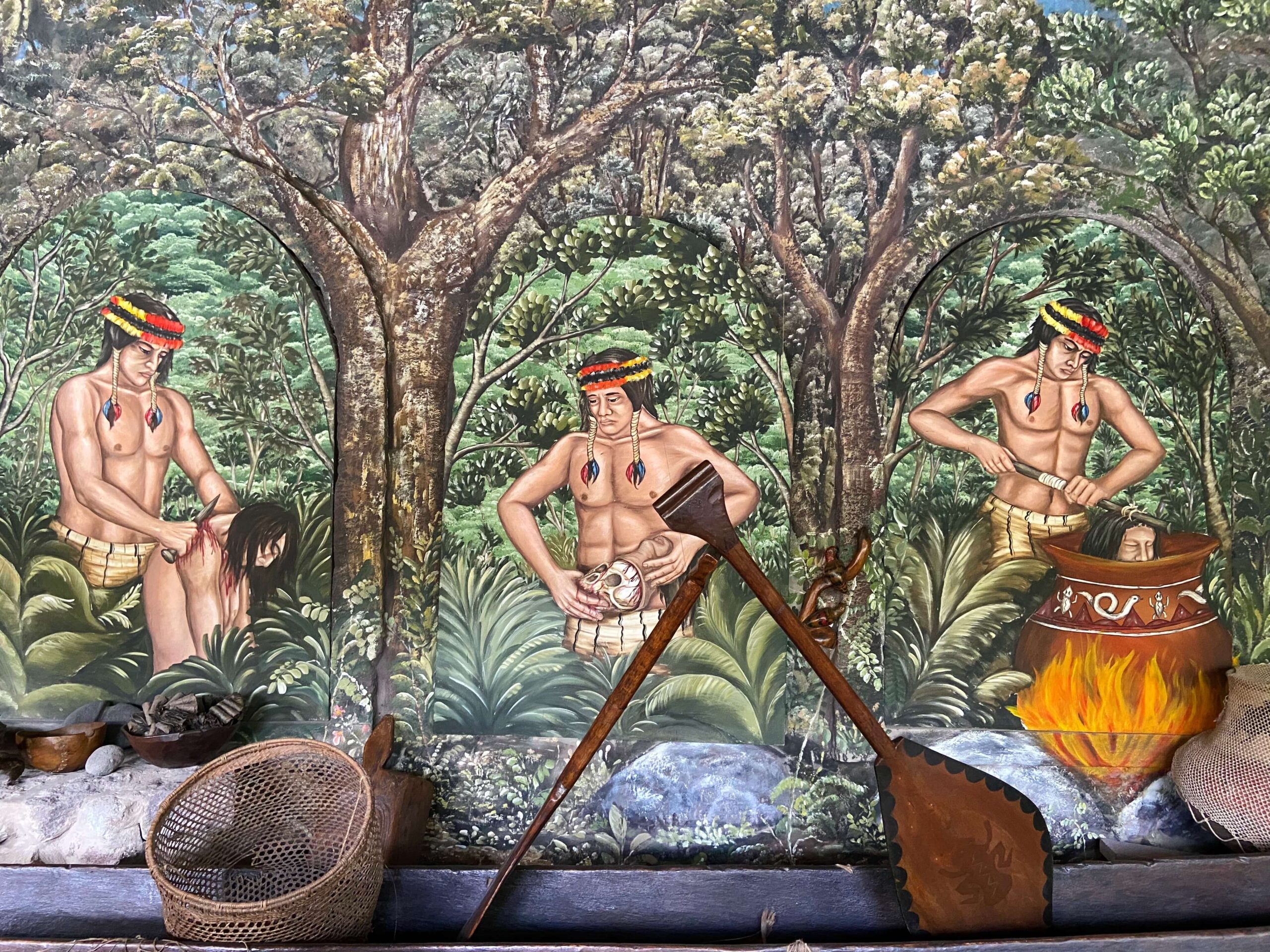
We’d been briefly introduced to the tribal concept of shrinking a human head during our walking tour of the old town but this time, we had some rather interesting artwork providing a visual representation of the process. A traditional Amazonian act during times of war, the victorious tribe leader would decapitate the chief of their rival, burying the rest of their corpse far away to prevent them passing through to the afterlife. Even more gruesome, they’d boil the head three times, shrinking and wearing it around their neck as a warning to others. Whereas the walking tour had passed around a replica portraying how your head would shrink to the size of your fist, we were this time shown a genuine artefact in a jar. Not your typical start to a museum tour.
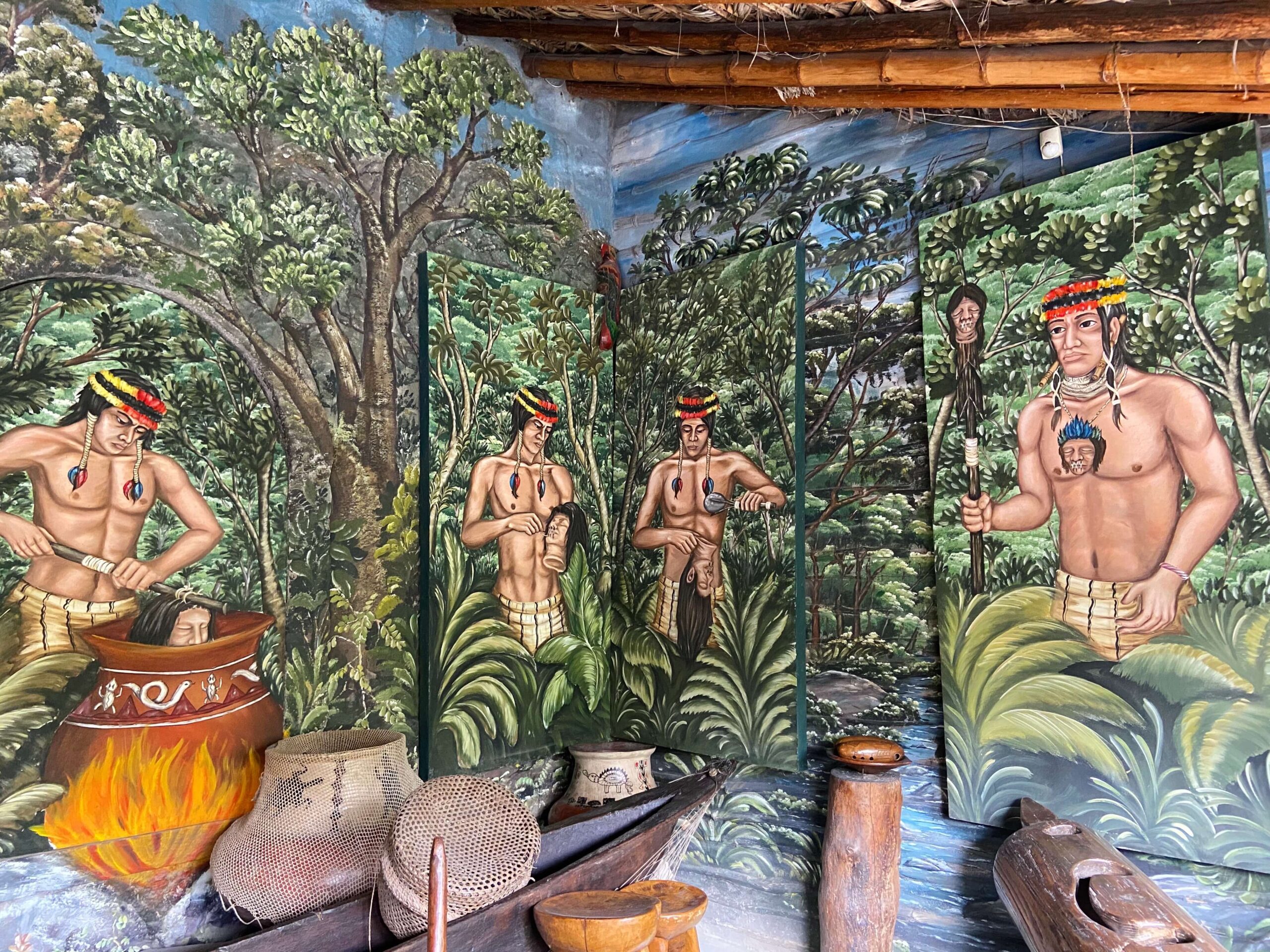
To add to the peculiarities, we were also shown the pickled remains of a fish native to the Amazon with a reputation for invading the human body via the victim’s genitalia; something said to be, understandably, excruciating. At this point I made a mental note that should I visit the Amazon during my six months in South America, I’d be staying out of any water at all times. This obviously isn’t an option for the tribesmen who need to hunt for food though and we were told that they tie up their genitals when in the river to combat this.
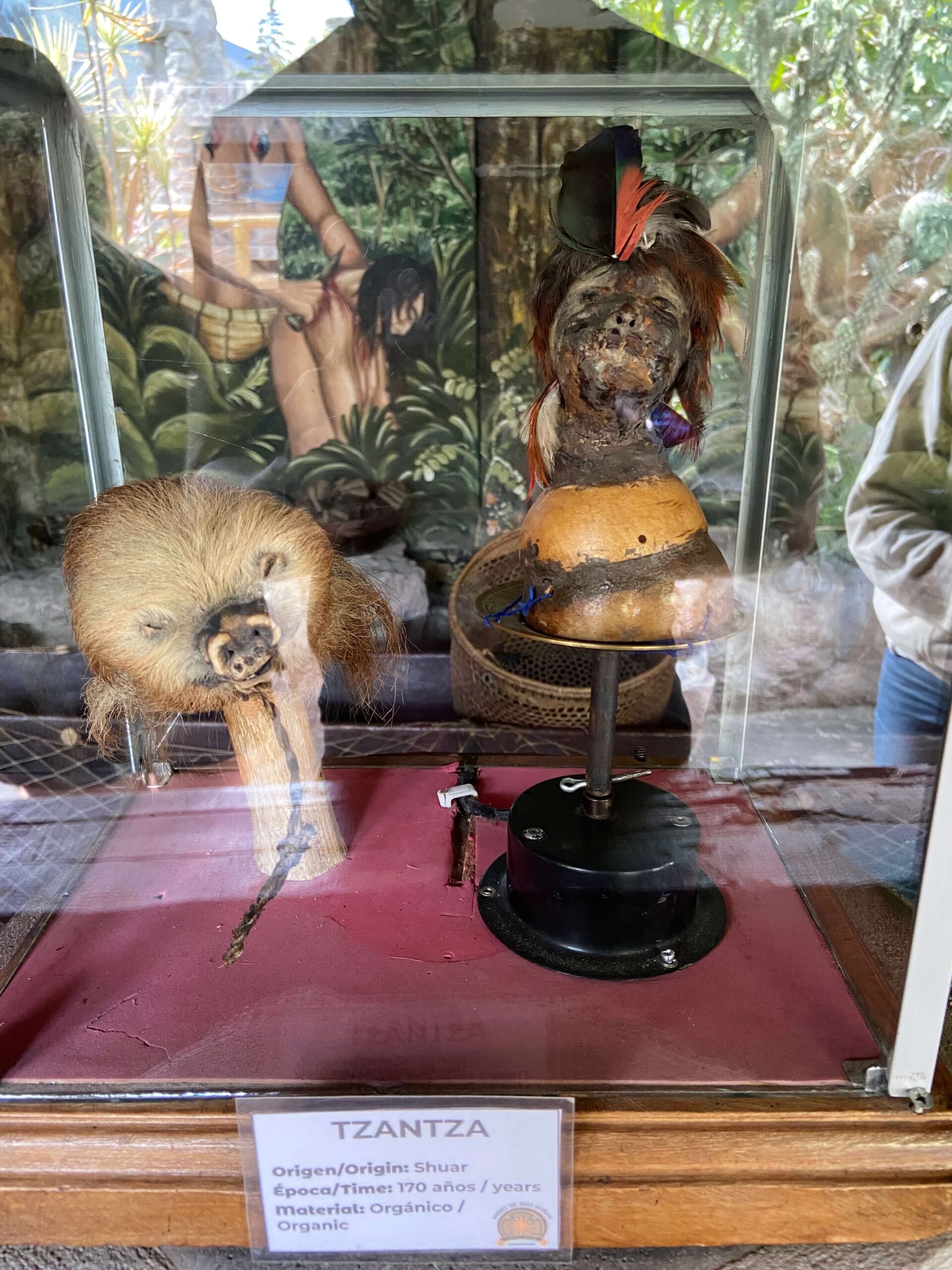
The tour also gave us the opportunity to learn about some skilful craftwork, ranging from the construction of bamboo houses and the manufacture of blow pipes to shoot poison arrows to the creation of intricately woven clothes. Even in death, individuals were buried with pots, pans and other handmade utensils for use in the afterlife. However, it was something more morbid that caught the attention of the group.
When an Amazonian warrior died, his wife was buried alive with him. Thankfully any images of a screaming woman thrown into a grave and covered in soil were quickly dispelled. Done via a more “humane” approach, and I use the term very, very loosely, the spouse would drink copious amounts of a native cacti plant that would place them into an intoxicated coma. Only then would they be buried with their dead husband. Still completely terrifying, but I’d wager that most people would prefer the latter of the two scenarios.
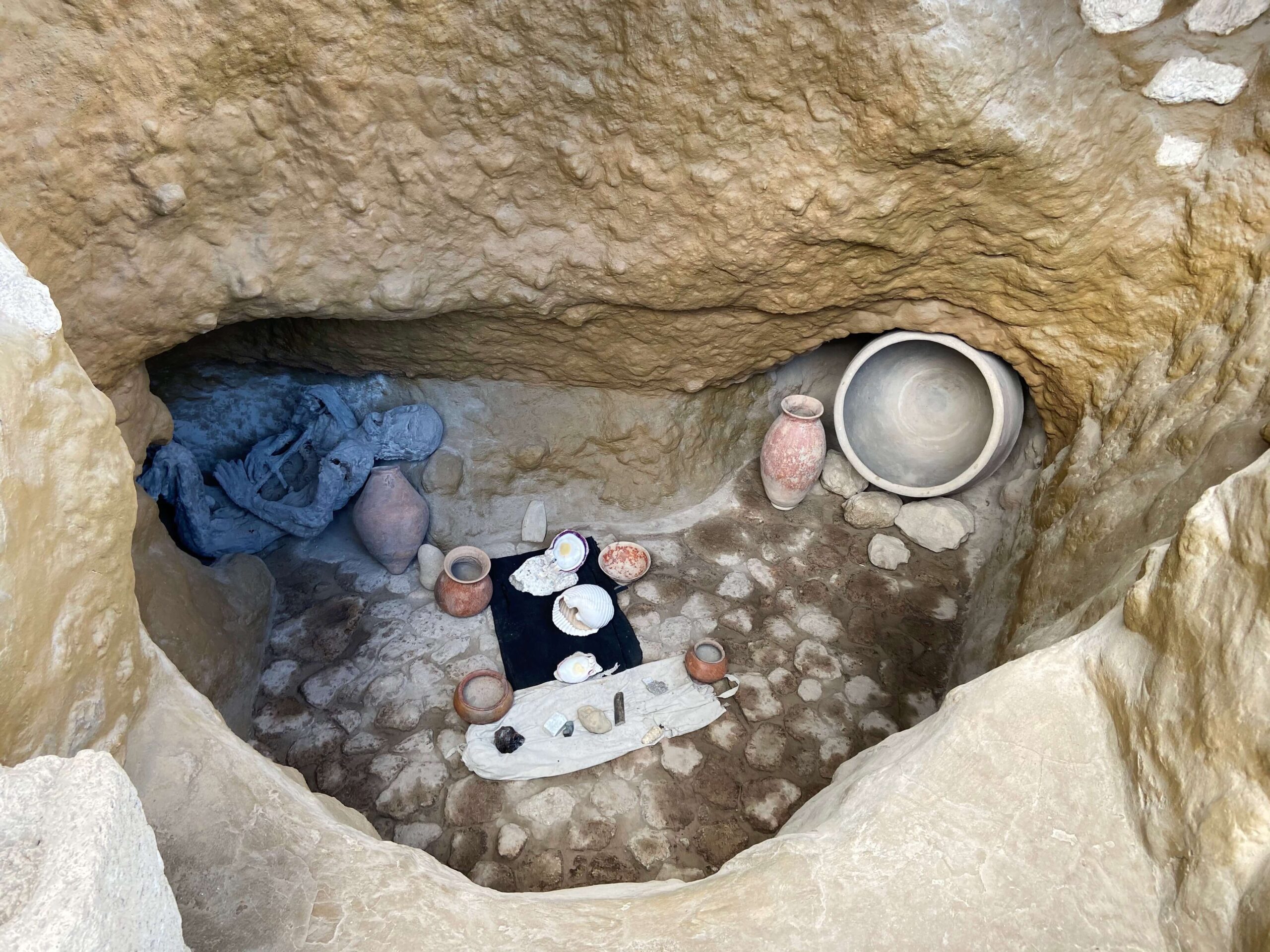
Still nursing a state of incredulity following our education on Amazonian burial rites, the next activity on the tour was the one we’d all been waiting for. The “official” middle of the world with the coordinates 00°00°00° marking the spot. Identified via GPS, it’s said to be wholly accurate in comparison to the Mitad del Mundo monument next door, but I’ll explain why later. Of course, there was a clamour for photos next to the pole as tourists straddled either side of the line dividing the two hemispheres, arms aloft and smiles aplenty. The guide took pictures of everybody on their individual phones as a memento to keep but, as you can imagine with how quickly she needed to get through everyone, the quality wasn’t great. Once this was done, we were ushered along to the next stage of the tour involving the famous water experiments.
Tip… When the tour reached the middle of the earth monument, there was quite a rush to get pictures before the guide moved on. At the end of the tour, we circled back round and had it completely to ourselves, enabling enough time to get the pictures we wanted before the next group came along. Don’t worry about not getting a good shot first time around.
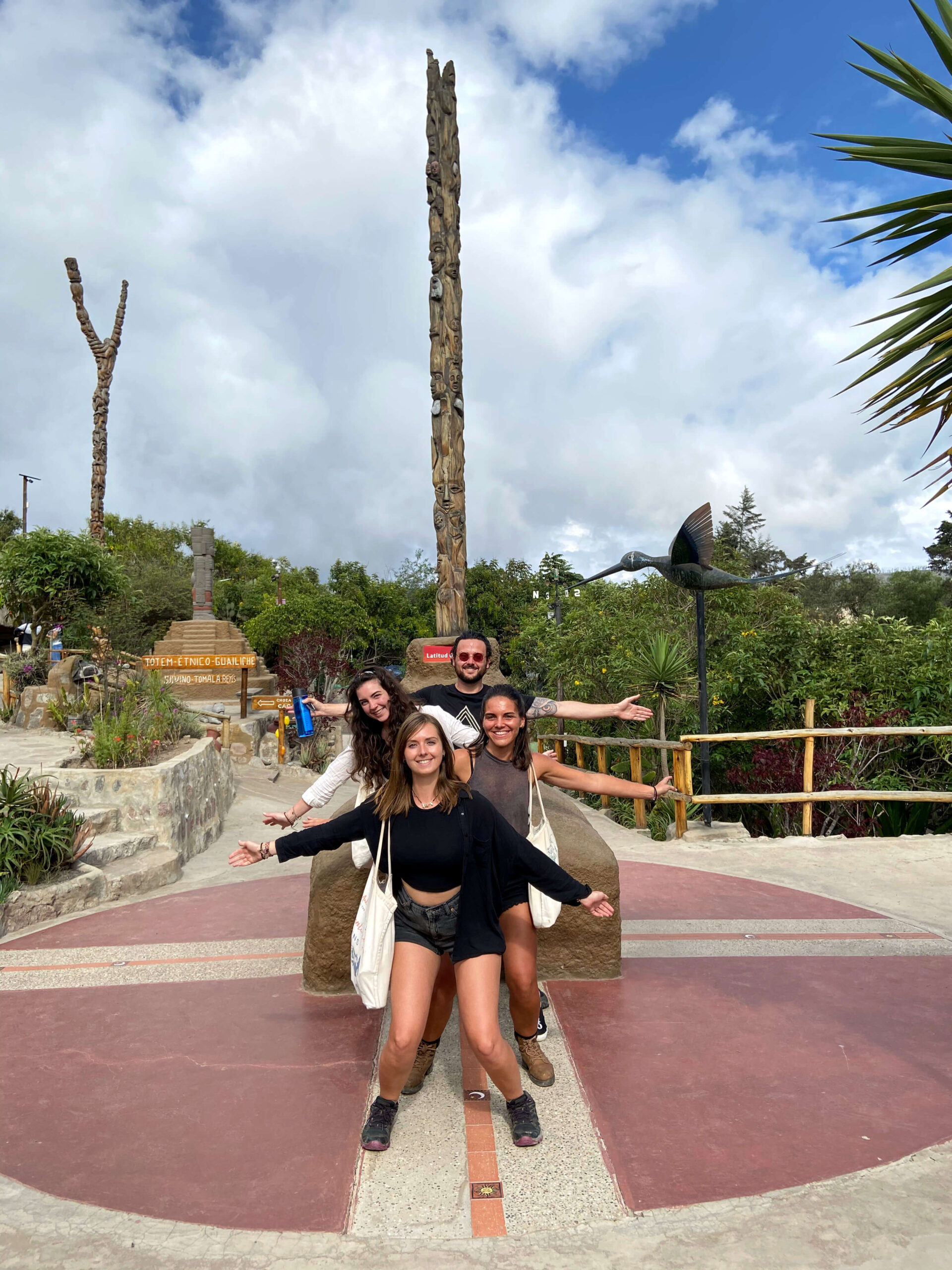
The first demonstration involved a portable sink that was drained on three occasions; on the actual equator line, south of the equator and then north. The water fell straight through the plug when placed on the actual line, drained clockwise when south of the equator line and anti-clockwise in the north, much to everybody’s fascination and awe. I’ve since read that contrary to popular belief, you can’t observe what’s known as the “Coriolis effect” by watching a toilet flush or a sink drain, so I’m not entirely sure how much of this was routed in science or gimmick. Still, it was entertaining and interesting to watch. The second demonstration was an exhibition in precision and care as our guide deftly balanced an egg on a nail positioned over the line, executing the action with aplomb. What looked a relatively easy exercise proved futile for every other member of the group, with none of the visitors able to replicate the feat. As someone with the finesse of a rhinoceros, it’s no surprise that I didn’t come close either.
The final demonstration was to see who could walk along the equator line with their eyes closed. Whether a scientific phenomenon via the influence of forces or more a psychological hinderance, I found it impossible to do. It genuinely felt like there was a force pushing you towards one side or the other and none of us where able to stay on track anywhere close to the line.
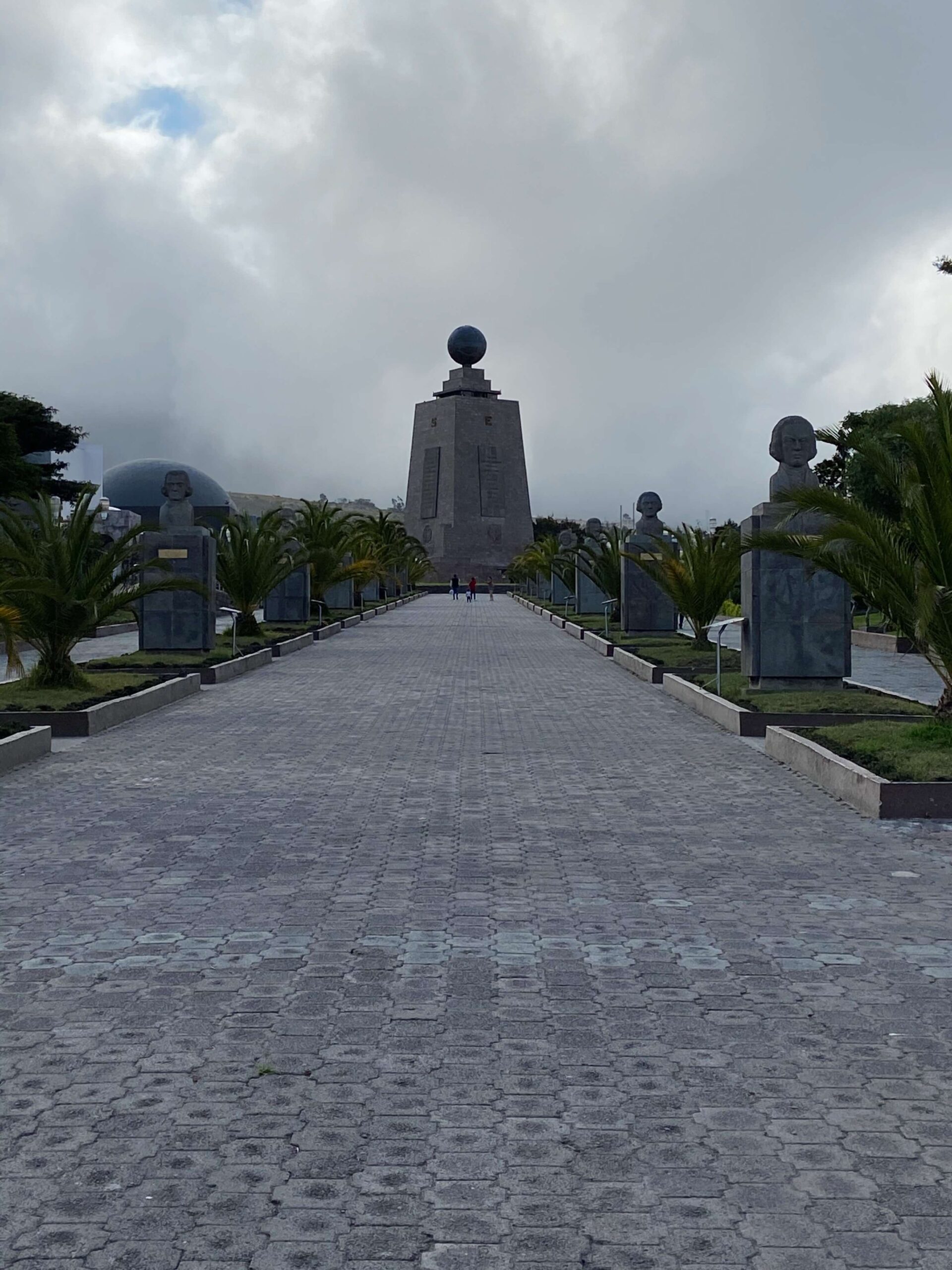
With the first of the two attractions done, we wanted to head over to Mitad del Mundo to visit the second of the two monuments. As it goes, we didn’t actually enter in the end; I think we were still tired from our epic hike in Mindo the day before and wanted to save the $6.00 entry fee. However, I wouldn’t dissuade anybody from visiting this attraction too, as the history behind it is fascinating. It’s quite extraordinary when you think about it. In 1736, a French expedition team led by the explorer Charles-Marie de la Comdamine “pinpointed” the equator. It is said that they were only inaccurate by 250 metres. Phenomenal given that the technology nearly 300 years ago is light-years away from what we have today. Following the discovery, a 30-foot statue was erected complete with a line indicating the equator. Of course, we now know that the location is incorrect, but it is still a very popular destination for visitors to this day. I’d be more inclined to check it out should I return to Quito in future.
It was a good afternoon full of interesting information mixed with some fun, educational exercises to boot. With transport from Quito at $10.00 return via CarpeDM tours plus the $4.00 entry fee to Museo Solar Inti Ñan, the combined price of $14.00 wasn’t a budget-breaker and was worth the money. Include the Mitad del Mundo monument too and for $20.00 all-in, I’d say it’s a good day out. Whilst some may be sceptical about the science behind the demonstrations, I thoroughly enjoyed the experience and would recommend it to anyone.
Read more… Quito: The “Light of the Americas”
Share this article with friends on social media…

United Kingdom | The complete guide to the Birmingham Tolkien Trail; the original Lord of the Rings tour. Discover what inspired J.R.R Tolkien’s fantasy epic!

United Kingdom | A complete guide to the Sarehole Mill Tolkien Tour, where you can uncover the inspiration for J.R.R Tolkien’s The Lord of the Rings.

Depth of Mind is a travel blog providing honest, trustworthy advice to help aspiring travellers achieve an authentic travel experience.
All rights reserved – photography cannot be used without the express permission of the author.
© Depth of Mind 2019-2023
SIGN UP FOR THE NEWSLETTER
